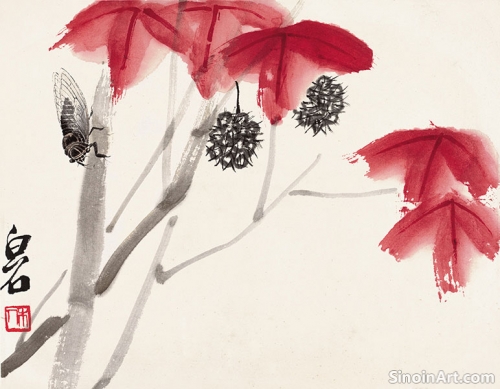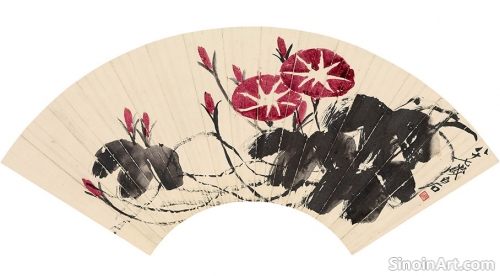Learning Xieyi Painting: A Path of Practice
|
Learning Xieyi painting is a journey of exploration and discovery, requiring dedication, patience, and a willingness to embrace imperfection. It’s not just about learning technical skills; it’s also about developing a deep understanding of the philosophy and aesthetics underlying the art form. The learning process is often seen as a personal and transformative experience.  The first step in learning Xieyi is to master the basic brushstrokes. This involves practicing simple lines and shapes, learning how to control the brush, ink, and water. A solid foundation in calligraphic brushwork is essential for developing fluency in painting. This fundamental practice of line work is vital to mastery.  A crucial aspect of learning Xieyi is to practice observation of the natural world. By carefully observing the forms, textures, and movements of plants, animals, and landscapes, students learn to capture the essence of their subjects with a few expressive strokes. Nature is seen as the primary teacher. This observational practice forms the backbone of Xieyi learning.  Copying the works of the old masters is a vital part of learning Xieyi. By studying the techniques and compositions of renowned artists, students gain a deeper understanding of the tradition and develop their own unique style. This learning through imitation builds a solid foundation for future artistic development. Developing a personal style is key in Xieyi painting. Students are encouraged to experiment, to take risks, and to find their own voice within the tradition. This exploration involves not just the technical aspects of painting but also the deeper philosophical aspects of the art form. The cultivation of a personal voice is essential. Finally, patience and consistency are essential in the learning journey. Mastering Xieyi takes time, effort, and a willingness to learn from mistakes. The practice is a continuous journey of self-improvement and artistic growth. The joy is found in the process, not just in the end result. |
Tag : Learning Chinese painting, Xieyi painting lessons, brushwork practice, art master studies, developing personal style
Related information
- The Role of the Inkstone in Xieyi
- The "Three Perfections" in Xieyi
- Xieyi Painting and the Concept of "Shu Xing"
- The Concept of "Qing" in Xieyi Painting
- The Influence of Zen Buddhism on Xieyi Painting
The inkstone (yàn) is a vital part of Xieyi painting, influencing the quality and texture of ink, and serving as an object of both practical use and beauty, representing a key part of the ritual of painting and connecting the artist to tradition.
The "Three Perfections" (sānjué) – poetry, calligraphy, and painting – represent the holistic literati ideal, emphasizing the integration of these three art forms as a complete expression of the artist's personal feeling, thought, and their connection to tradition, with calligraphy’s influence often seen in Xieyi’s brushwork.
"Shu Xing" (calligraphic nature) is a core concept in Xieyi painting, emphasizing how the principles and techniques of calligraphy influence its brushwork, structure, and expressive qualities, reflecting the shared tools, values, and emphasis on balance, rhythm, and a sense of life force.
"Qing" (feeling) is a fundamental concept in Xieyi painting, emphasizing the importance of artists imbuing their work with personal emotion and genuine expression, requiring sensitivity, observation, and technical skill to convey feelings through brushstrokes, composition, and connecting with viewers on a deeply human level.
Zen Buddhism has had a significant influence on the philosophy and practice of Xieyi painting. Zen’s emphasis on mindfulness, spontaneity, and direct experience resonates deeply with the core principles of Xieyi art. The relationship between Zen and Xieyi art is profound and ongoing.